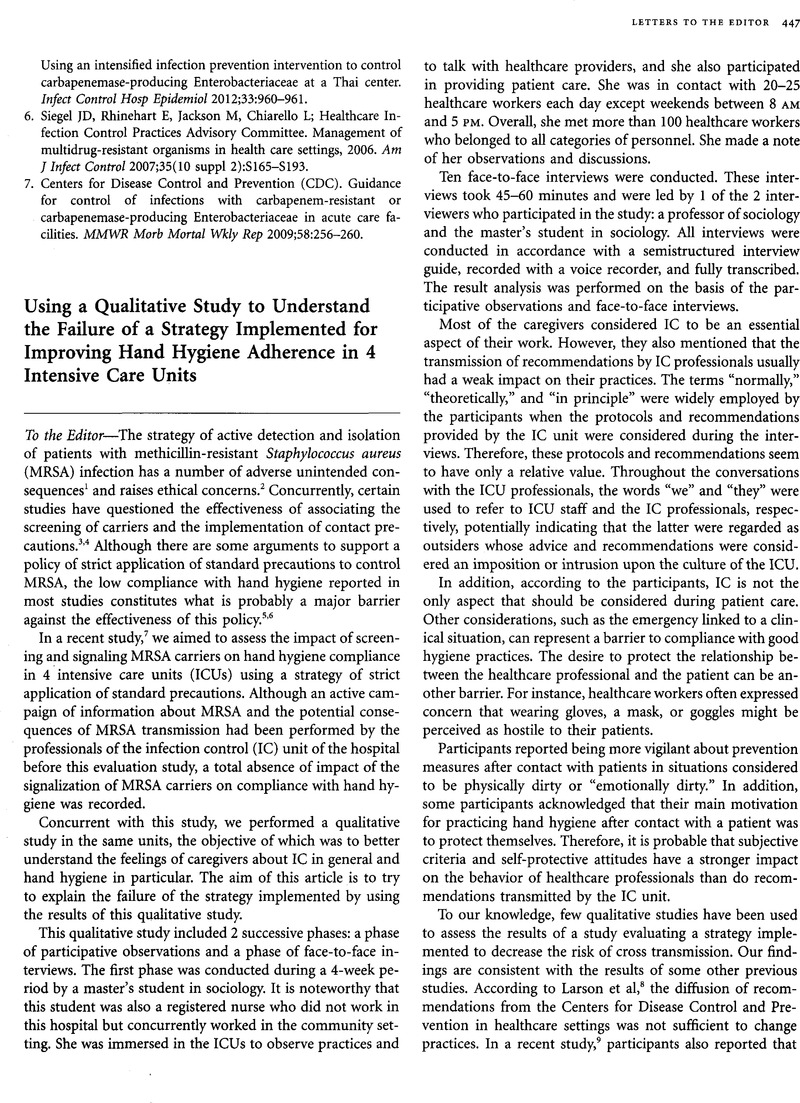Crossref Citations
This article has been cited by the following publications. This list is generated based on data provided by Crossref.
Seibert, Dorothy J.
Speroni, Karen Gabel
Oh, Kyeung Mi
DeVoe, Mary C.
and
Jacobsen, Kathryn H.
2014.
Preventing transmission of MRSA: A qualitative study of health care workers’ attitudes and suggestions.
American Journal of Infection Control,
Vol. 42,
Issue. 4,
p.
405.
Chatfield, Sheryl L.
DeBois, Kristen
Nolan, Rachael
Crawford, Hannah
and
Hallam, Jeffrey S.
2017.
Hand hygiene among healthcare workers: A qualitative meta summary using the GRADE-CERQual process.
Journal of Infection Prevention,
Vol. 18,
Issue. 3,
p.
104.
Haac, Bryce
Rock, Clare
Harris, Anthony D.
Pineles, Lisa
Stein, Deborah
Scalea, Thomas
Hu, Peter
Hagegeorge, George
Liang, Stephen Y.
and
Thom, Kerri A.
2017.
Hand Hygiene Compliance in the Setting of Trauma Resuscitation.
Injury,
Vol. 48,
Issue. 1,
p.
165.
Bernard, Laurence
Biron, Alain
Lavigne, Geneviève
Frechette, Julie
Bernard, Agnès
Mitchell, Jonathan
and
Lavoie‐Tremblay, Mélanie
2018.
An exploratory study of safety culture, biological risk management and hand hygiene of healthcare professionals.
Journal of Advanced Nursing,
Vol. 74,
Issue. 4,
p.
827.



